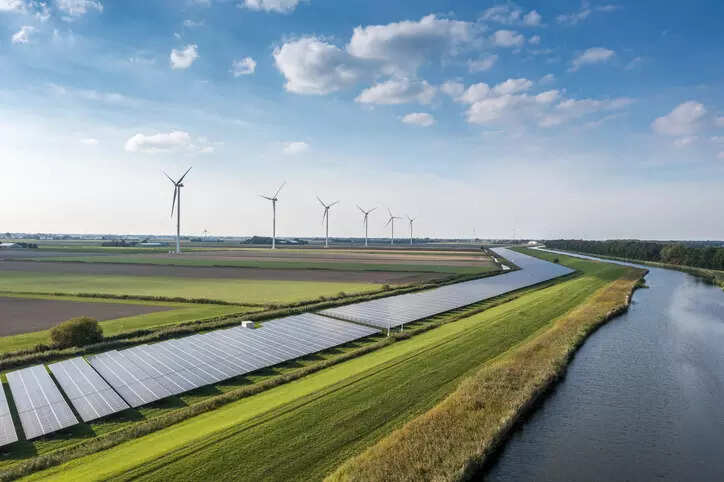[ad_1]

New Delhi: Indian wind and solar project-finance transactions witnessed a 4 Percent growth in power generation in the financial year ending March 2024 (FY24), driven by new assets becoming operational, according to a report by Fitch Ratings. However, overall power generation remained slightly below one-year P90 forecasts.
P90 is a statistical measure indicating the level of energy output that is expected to be met or exceeded 90 Percent of the time, providing a conservative estimate that financiers use to assess project viability.
Solar generation improved by 2 Percent in FY24, matching the one-year P90 estimate, while wind generation rose by 8 Percent , though it was still 1 Percent below the one-year P90 estimate. This marks an improvement from FY23, where wind generation was 5 Percent lower than the P90 forecast.
Fitch’s report highlights that the enhanced performance of these renewable assets is attributed to operational improvements and favorable weather conditions. “The stability and predictability of solar resources relative to wind differentiate these asset types,” noted Fitch. Solar projects have consistently outperformed wind assets in terms of generation against load factor estimates.
The report also indicates a significant improvement in cash collection cycles for the rated restricted groups (RGs) in FY24. The receivable days for revenue from the sale of power dropped to around 100 days, down from about 140 days in FY23. This improvement was supported by the Indian government’s Late Payment Surcharge scheme, which has facilitated the clearance of overdue payments by state distribution companies (discoms).
“Receivable days at Fitch’s rated portfolio improved to around 100 days in FY24, from about 140 days in FY23. Both wind and solar asset collections improved on an aggregate basis,” Fitch stated in the report. The report noted that most state discoms have significantly reduced their payment delays, with only a few, such as those in Rajasthan, still showing delays.
The Fitch-rated portfolio consists of 110 wind and solar assets with a total capacity of 6,198 MW. Solar assets accounted for 65 Percent of the total capacity, while wind projects contributed the remaining 35 Percent . The report observed that the majority of the capacity (56 Percent ) is contracted with state-owned Indian discoms, followed by sovereign-owned entities such as NTPC and SECI, which account for 32 Percent of the off-take.
The report concludes that while challenges remain in the renewable energy sector, particularly with regard to resource availability and payment cycles, the outlook is positive. The continued improvement in generation performance and cash collection cycles suggests a more stable and predictable future for India’s wind and solar projects.
Fitch emphasized the importance of continued reforms and operational enhancements to sustain this growth trajectory, particularly in light of India’s ambitious renewable energy targets.
[ad_2]
Source link



